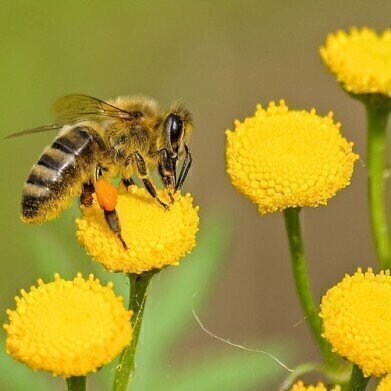Gas Chromatography
Keeping Honeybees Healthy
Apr 29 2018
Honeybees are vitally important for humans in that they help to pollinate our plants, thus providing us with a plentiful source of plant foodstuffs. As gardeners, we plant flowers and plants to hopefully help to keep bees healthy. But are all flowers equal for a bee’s health? Or like humans — are some foods healthier than others?
Don’t ask the baker for bee bread
Scientist’s from Lancaster University’s Environment Centre and Centre for Ecology and Hydrology have looked at the effect of different foodstuffs on bee’s microbiome. In research published in the journal Ecology and Environment — Bacterial communities associated with honeybee food stores are correlated with land use — they investigated whether the bacteria found in a bee’s gut could be linked to its diet.
As with humans, the bacteria found in a bee’s gut is linked to how healthy they are. They carried out the research by examining the mix of bacteria that could be found in bee bread — sometimes known as ambrosia, the food of the Gods in Ancient Greece — which is bee pollen packed into small pellets. The bee’s make bee bread as a long-term food supply that can be stored and fed to young bees.
“We are what we eat” — said Mrs Bee
The team found that the bread from hives close to rough grasslands, broadleaf woodlands and coastal landscapes had more bacterial diversity than bee bread samples from hives near managed farmlands and near coniferous woods. Dr Philip Donkersley, the lead author on the study said in a press release that:
“It is traditionally thought that monocultures, such as grazing land and timber forests, were bad for pollinators due to a lack of food continuance through the year. However, our study suggests land use change may also be having an indirect detrimental effect on the microbiota of bee bread. Since nutrition derived from bee bread and the microbiome therein directly affects the health of bees we therefore believe this demonstrates an indirect link between landscape composition and bee fitness.”
There are various methods that ecologists can use to measure an environmental exposome. An exposome is simply the measure of all the environmental exposures in an individual’s lifetime and how they might affect the individual’s health. One method is to use chromatography as discussed in the article, Comprehensive, Non-Target Characterisation of Blinded Environmental Exposome Standards Using GCxGC and High Resolution Time-of-Flight Mass Spectrometry.
Native plants please gardeners
The team also point out that non-native plants might not be as good for a bee’s health as native plants. So, gardeners trying to grow a wide range of flowers from around the world might be affecting a bee’s long-term health. Again, Dr Donkersley: “This may be evidence that bees suffer from foraging on non-native plants that they have not co-evolved with.”
So, go native gardeners.
Digital Edition
Chromatography Today - Buyers' Guide 2022
October 2023
In This Edition Modern & Practical Applications - Accelerating ADC Development with Mass Spectrometry - Implementing High-Resolution Ion Mobility into Peptide Mapping Workflows Chromatogr...
View all digital editions
Events
Apr 23 2024 Kintex, South Korea
Apr 23 2024 Seoul, South Korea
Apr 28 2024 Montreal, Quebec, Canada
May 05 2024 Seville, Spain
May 15 2024 Birmingham, UK













